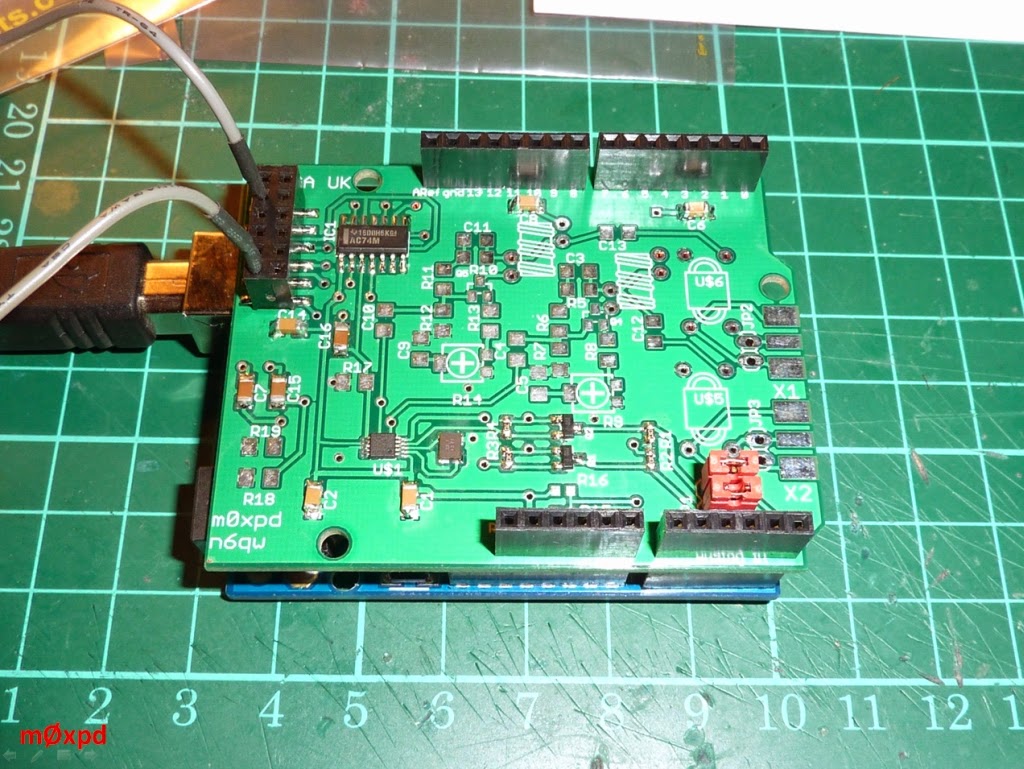I'm excited to bring news of a new board - a flexible RF Generator, based upon the Si5351, including two channels of amplification and a quadrature generator...
The board is served up in an Arduino Shield format - but it can be used as a general-purpose board with any system. I've been playing with the design for a few weeks now and I'm delighted to tell that it is a real team effort. As before, all this is made possible by Dennis, g6ybc, of Kanga Products but this time we have been joined by Pete Juliano, n6qw.
The prototype PCBs were delivered to Dennis just before Christmas and it gave us just the excuse we needed to meet up (in a pub, of course) to exchange greetings and components...
I soon had the digital side of things checked and working (but I must give credit where it is due - Dennis soldered the tiny Si5351 onto the board) and I was able to confirm operation two days before Christmas.
You can see the part-built system in its test configuration atop an Arduino UNO here...
The system in this state is, in fact, pretty much a functional duplicate of the experimental Arduino shield I've described before.
The 2*6 header at top left of the photo above is an expanded version of the "RF Bus" on the Kanga / m0xpd DDS Shield, to give backward compatibility between this new RF Generator and the old DDS Shield (along with the other shields that interfaced to it). The expansion allows for the fact that there are now three independent frequencies on the bus - and I've made not only the Q and I available on the header (as on the DDS Shield) but also their complements, Not Q and Not I.
The red jumpers (bottom right in the photo above) select the I2C source - putting the jumpers in place connects the I2C signals to pins A4 and A5 on the Arduino shield (as is appropriate to e.g. an Arduino UNO) whilst leaving them off makes the I2C available on header pins, to be allocated as the user wishes.
I finished stuffing the rest of the board yesterday and winding the coils, as seen in the photo below, in which I'm making an analog test from one of the n6qw output amplifiers...
The shield has all three outputs of the Si5351 accessible on the header, as I've already explained, but two of them are further buffered by amplifiers designed by my friend Pete - aptly described as "afterburners" by Bill, n2cqr. Readers will understand why I'm interested in having two channels so buffered, given my interest in Dual DDS schemes etc..
The outputs of these amplifiers are isolated by transformers and are available on 0.1 inch headers - or on the mandatory SMA connectors if you're feeling flush!
The whole shebang is explained in this annotated picture...
We need a few minor board revisions before we're ready to go public (they really are revisions, rather than corrections) and then you will be in a position to try it for yourself.
2015 looks like being an exciting year.
...-.- de m0xpd
Subscribe to:
Post Comments (Atom)






No comments:
Post a Comment